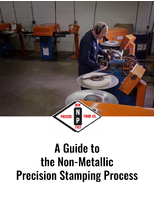Servo Amplifier works with feedback from resolver sensors.
Press Release Summary:

Able to drive brush and brushless motors to 7 hp, Xenus(TM) provides CANopen multi-axis motion control as well as stand-alone single axis motor drives. It reads feedback from resolver sensors to 14-bit accuracy at 10,000 rpm. Amplifier provides 15 kHz current loop update rate and 3 kHz position and velocity loop update rate. Built-in power supply enables amplifier to run on single or 3-phase 100-264 Vac, eliminating need for separate DC power supply.
Original Press Release:
Xenus Servo Amp Works With Hi Speed Feedback From Rugged Resolver Sensors
Powerful Xenus servo amplifiers provide CANopen multi-axis motion control as well as versatile stand-alone single axis motor drives. Engineering innovation lets Xenus amplifiers read feedback from resolver sensors to 14-bit accuracy at 10,000 rpm. Resolver sensors replace costlier shaft encoders, handle harshest environments, eliminate need for Hall commutation signals.
Data Sheet: copleycontrols.com/motion/downloads/
Canton, MA, July 20th, 2004 -Copley Controls adds a new resolver-compatible model to its family of powerful (to 40A @ 200V) CANopen networking Xenus servo amplifiers. Most servo amplifiers operate with position and velocity feedback from incremental encoders, supplemented by Hall sensor feedback for motor commutation. In contrast, resolver sensors deliver absolute motor position feedback, from which commutation commands can also be derived. Thus, resolvers can replace both encoder and Hall sensors. Resolvers use none of the encoder's delicate parts-LEDs, optics, or integrated circuits. Instead, resolvers are basically rotary transformers, and like the drive motors themselves, consist principally of iron and wire. Dependability in harsh environments is therefore a further benefit of resolver-based feedback.
Overview-High Power Xenus Family
Xenus high power servo amplifiers drive brush and brushless servo motors (to 7 hp), including modern linear motors. Xenus amplifiers permit sinusoidal or trapezoidal motor commutation. The amplifiers are CANopen compatible for multi-axis motion control systems. They are supported by software that's fully tested with third party communications cards and I/O.
A built-in power supply enables Xenus amplifiers to run on single or three-phase 100 - 264VAC, eliminating need for a separate DC power supply. Xenus's ability to operate directly from AC mains simplifies motion systems design, and is especially economical in multi axis systems where one high power motor is networked with a host of smaller motors powered by their common low voltage DC supply.
Besides networked operation, the amplifiers also work as versatile stand-alone drives for single axis applications. As stand alone drives Xenus amplifiers respond to variety of signal formats. Among the control formats are step-and-direction commands for upgrading motion systems from steppers to high torque servomotors.
Xenus Networking Eliminates Controller
Networked all-digital Xenus(TM) amplifiers receive position/velocity feedback from the drive motor, then close the local servo feedback loop within the amplifier itself. Local loop-closing is a major advance in modern servo amplifier design: no long is a separate motion controller necessary. In multi-axis networked controls, a low cost two-wire CAN bus provides the link between control PC and the very smart Xenus drive amplifiers. All digital multi-axis CANopen networking systems provide a 30% - 50% cost saving over traditional analog multi-axis systems
Introducing RESOLVER Feedback
Motion control servo amplifiers "close the loop" around motor shaft angle and speed feedback. Ordinarily, an incremental shaft encoder, driven by the motor, provides this information. Because incremental encoders can't provide absolute shaft angle data, the drive motor must also incorporate Hall position sensors to furnish motor commutation signals.
The resolver provides absolute (but analog) information. The Xenus amplifier's innovative resolver-to-digital converter quantizes this information, also computes both motor speed and the shaft position angle data needed for motor commutation. The amplifier's resolver-to-digital converter provides 14 bit resolution to 10,000 rpm.
The resolver is basically a rotary transformer with two secondary windings electrically 90° apart. This "iron-and-wire" construction, totally free from the encoder's more delicate optical and electrical components, provides durability in harsh operating conditions. While resolver and drive motor can share the same problematic environment, encoder feedback limits the drive to relatively clean and temperature controlled applications.
Historically, the cost of resolver-to-digital conversion has restricted the use of resolver-based feedback to applications in which ruggedness is a priority. However, low cost conversion technology, pioneered in the Xenus amplifier, promises to broaden resolver usage, and at the same time, simplify servomotor design and reduce manufacturing cost. Owing to its iron and wire construction, resolver functionality can be integrated into the motor's basic design, displacing both encoder and Hall commutating sensors.
Resolvers are inherently analog in nature, with resolution limited only by their manufacturing precision. Figure 2 shows how resolvers develop position information in the form of analog AC voltages. Amplitudes of the two sinusoidal secondary voltages V1 and V2 vary with shaft angle phi. Their voltage ration (V1/V2) is proportional to the tangent of resolver shaft angle phi. Consequently, actual shaft angle phi can be determined from the trigonometric identity: phi = tan-1 V1/V2. Xenus's internal A/D converters digitize the V1 and V2 voltages, enabling the amplifier's digital signal processor to compute shaft angle phi, and shaft speed dphi/dt.
Software Libraries Speed System Implementation
Copley Controls has developed extensive libraries of motion control software (Copley Motion Libraries) and software COM objects (COM) to make system development fast and simple. The development of low level code to control a CANopen network of intelligent drives is eliminated. All network housekeeping is taken care of automatically by a few simple commands linked into the user's Visual Basic, Labview or C++ application program.
Stand Alone Versatility
Besides their role in networked multi-axis motion control, Xenus amplifiers also function in stand-alone mode for single axis automation, including stepper to servo upgrade. With no need for a dedicated DC power supply, Xenus amplifiers provide economy and simplicity for high power single axis applications.
Xenus amplifiers also give the user a wide range of stand-alone control options. In position mode, the amplifiers accept CW/CCW inputs, pulse & direction inputs, and quadrature encoder inputs for electronic gearing. For torque and velocity mode operation, the amplifiers respond to ±10v analog commands, PWM signals with polarity information, and direct 50% PWM modulation of the power semiconductors.
Xenus translates step-and-direction inputs into fast-response feedback controlled servomotor power. The amplifiers also lend themselves to use in manually controlled machinery, permitting simple PLC operation-or even push button controls.
CME 2(TM) Software Automates System Setup
Xenus(TM) users automate otherwise time-consuming system setup and commissioning functions with Copley's CME 2(TM) software. The software, loaded into the user's computer, provides auto tuning of the amplifier's current loop and auto phasing of the motor's Hall sensors. With setup and tuning completed, the software settings are stored in the amplifier's non-volatile flash memory.
Specifications
Xenus(TM) amplifiers use the advanced carrier cancellation modulation (CCM) for utmost zero crossing linearity. A further benefit of carrier cancellation modulation is ultra low ripple current, which occurs at twice the carrier (PWM) frequency. Ripple frequency is 28 kHz. Current loop bandwidth is 2.5 kHz. The amplifier provides 15 kHz current loop update rate (67 µs) and 3 kHz (333 µs) position and velocity loop update rate. Xenus amplifiers are available for peak current from 18A to 40A, and operate from 100 - 264VAC single or three-phase line voltages.
Mechanical Design, Protection
Xenus(TM) servo amplifiers are built in metal enclosed packages measuring 2.55" high x 5.4" wide x 7.55" long. The amplifiers are protected against over-current, over-temperature, and incorrect operating voltages. They are further protected from short circuits between outputs, from output to ground, against over-current, over-temperature, and against incorrect operating voltages. In addition, protection circuits guard against loss of signal from either the encoder or the motor's Hall sensors. Built-in computation algorithms monitor the I2oT heating effect of load current, enable motor to run safely at its outer performance envelope.
Applications
Xenus(TM) servo amplifiers drive high power motors (to 5 kW) in stand-alone operation, and in multi axis networked automation. A built in DC supply that operates from single phase or three phase 50/60 AC simplifies system design.
Delivery: Stock - 4 weeks ARO.
Contact:
Dean Crumlish, Ext. 266
Copley Controls Corporation
20 Dan Road, Canton, MA 02021
Tel: 781 828-8090 o Fax: 781 828-6547
Internet: www.copleycontrols.com
Email: sales@copleycontrols.com
Price (1 - 9): From $837.00 oDepends on current and voltage ratings




